The advertising rickshaws promoting Thai massage parlors will soon disappear from the streets of Prague.
The Ministry of Industry and Trade (MIT) has upheld a decision by the city’s Department of Trades and Consumer Legislation, which ruled that these rickshaws must be removed as they constitute illegal advertising within a conservation area.
This decision is final and cannot be appealed. For several years, the city has been fighting to remove these red and green rickshaws, which are equipped with LED lights, from key locations.
Rickshaws Removed from Historic Locations
The removal order specifically targets rickshaws located in high-traffic areas, including Wenceslas Square, Old Town Square, Celetná and Karlova streets. The municipality argues that these rickshaws not only represent unauthorized advertising but also create obstacles for pedestrians.
The operator countered that the rickshaws are not advertisements but rather a means of transport for employees. However, the city imposed a fine on the operator for both the rickshaws and the use of tarpaulins on Karlova Street.
Complaint Rejected
The decision states, “The Ministry concludes that the contested decision was issued in accordance with the law and that the appeal should be dismissed as unfounded.” None of the operator’s arguments against the municipality’s decision were accepted.
“We now have a final ruling that the rickshaws in front of Thai massage parlors in Prague’s historic center are illegal advertising. The city has tried various methods to eliminate these rickshaws, which are blighting important public spaces in the center, but until now, we’ve encountered obstacles,” said city councillor Adam Zábranský (Piráti).
“They managed to get away with this for years, even though everyone knew they just parked them outside the establishment every morning and removed them at night without actually using them for transport,” he added.
This decision is part of the city’s broader effort to combat “visual smog,” or the proliferation of unsightly advertisements in public spaces.
Prague is working on new regulations to manage smaller advertising spaces and will commission a plan to strategically place poster display areas within the conservation zone.
Would you like us to write about your business? Find out more
Public transport in Žižkov will face significant disruptions over the next eight days due to a major water main failure.
Starting tonight, eight tram lines that normally run through Seifertova Street will be diverted, with normal service expected to resume on Thursday, August 29.
The issue arose from a water main breakdown at Sladkovského náměstí, affecting water supply to Vlkova and Seifertova streets. As a result, tram services on these streets will be suspended from 8 PM tonight to allow for necessary pipe repairs.
The affected lines include 15, 24, 26, 29, 34, 35, 90, and 95. Here’s how the routes will be altered:
- Line 15: Will be rerouted from Náměstí Republiky, passing through Karlín, Palmovka, and Biskupcova, before reaching Želivského and Olšanské hřbitovy.
- Line 29: Will bypass its usual stops to head directly from Krejcárek to Palmovka and Kobylisy.
- Line 34: Will take a detour from Libeňský most to Bílá labuť, then proceed to Masaryk Railway Station and Viktoria Žižkov.
- Line 35: Will operate on a modified route passing through Václavské náměstí, Jindřišská, Masaryk Railway Station, and Bílá labuť.
To help ease the disruption, the transport company is providing replacement bus services labeled X9, X15, and X95.
Passengers are advised to check the company’s website for further details on the changes and alternative routes.
Would you like us to write about your business? Find out more
Six years ago, Czech photographer Martin Škrabalek prepared an interesting project on the occasion of the anniversary of the entry of Warsaw Pact troops into Czechoslovakia.
He combined archival photographs of Prague, taken in the early days of the invasion, with footage of the modern city.
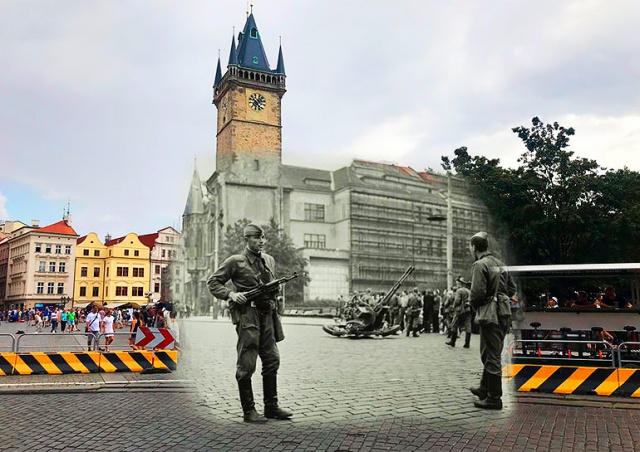
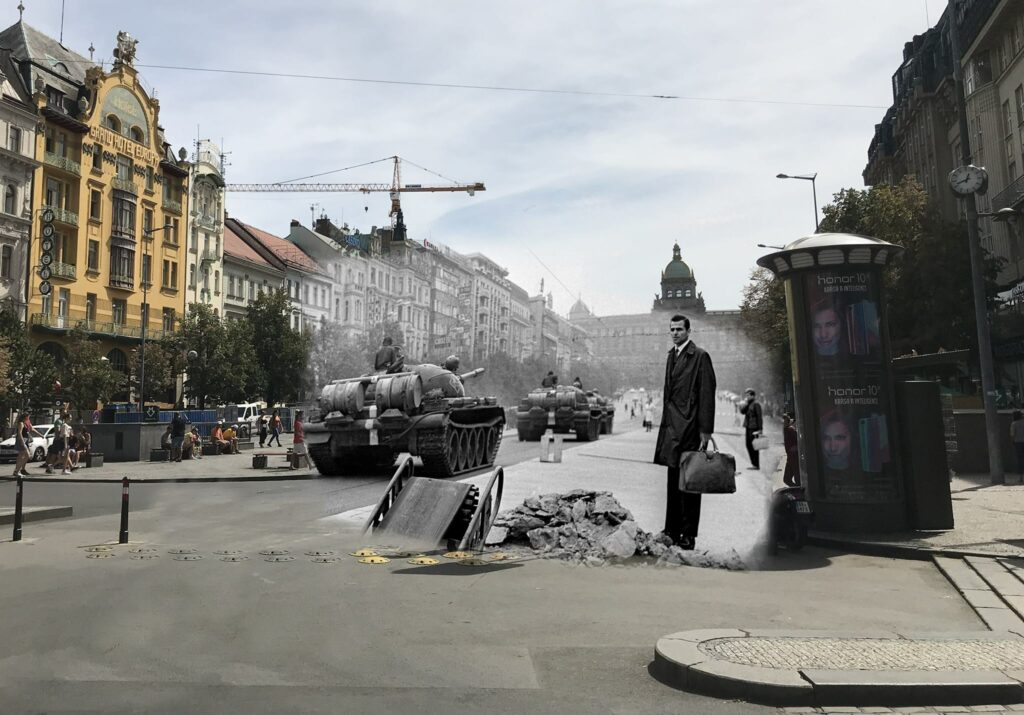
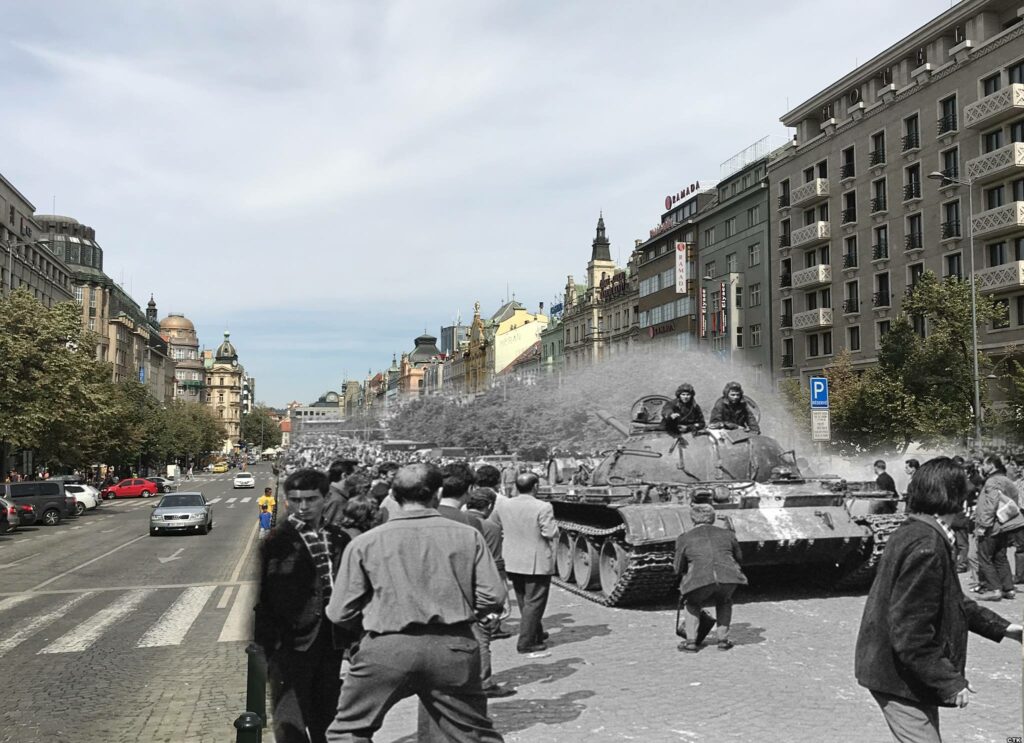
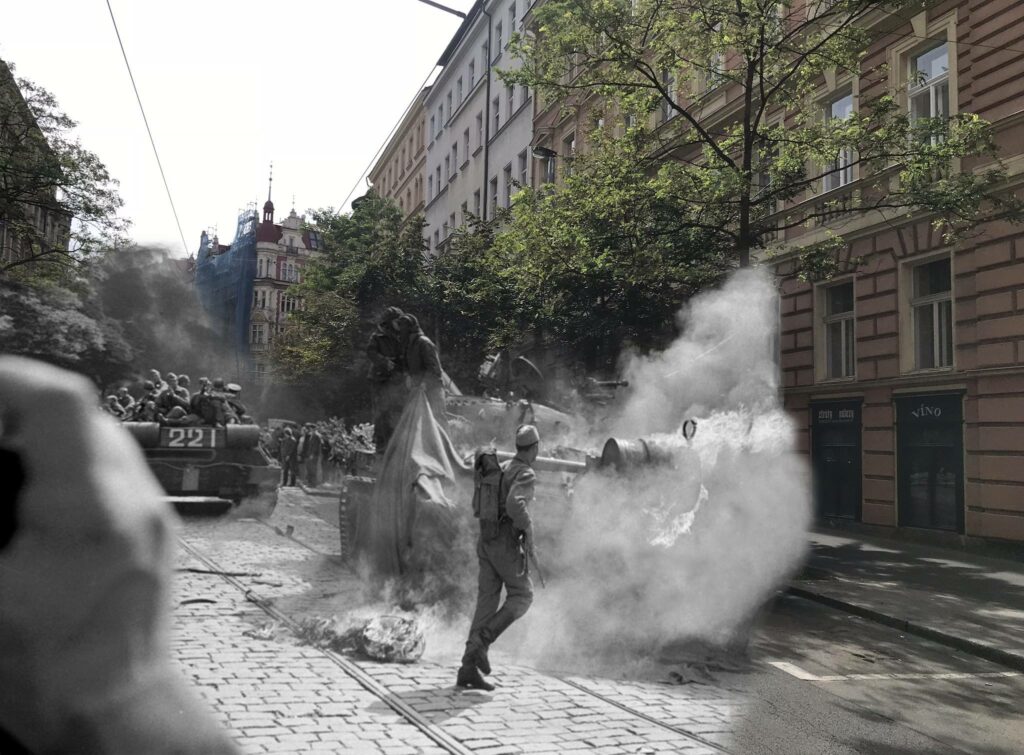
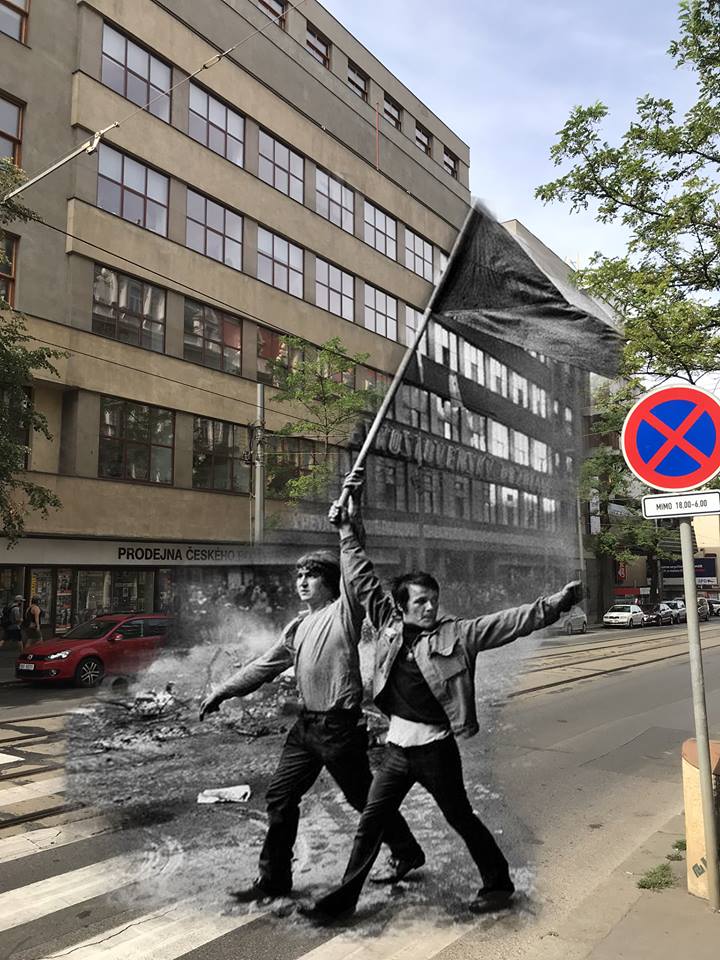
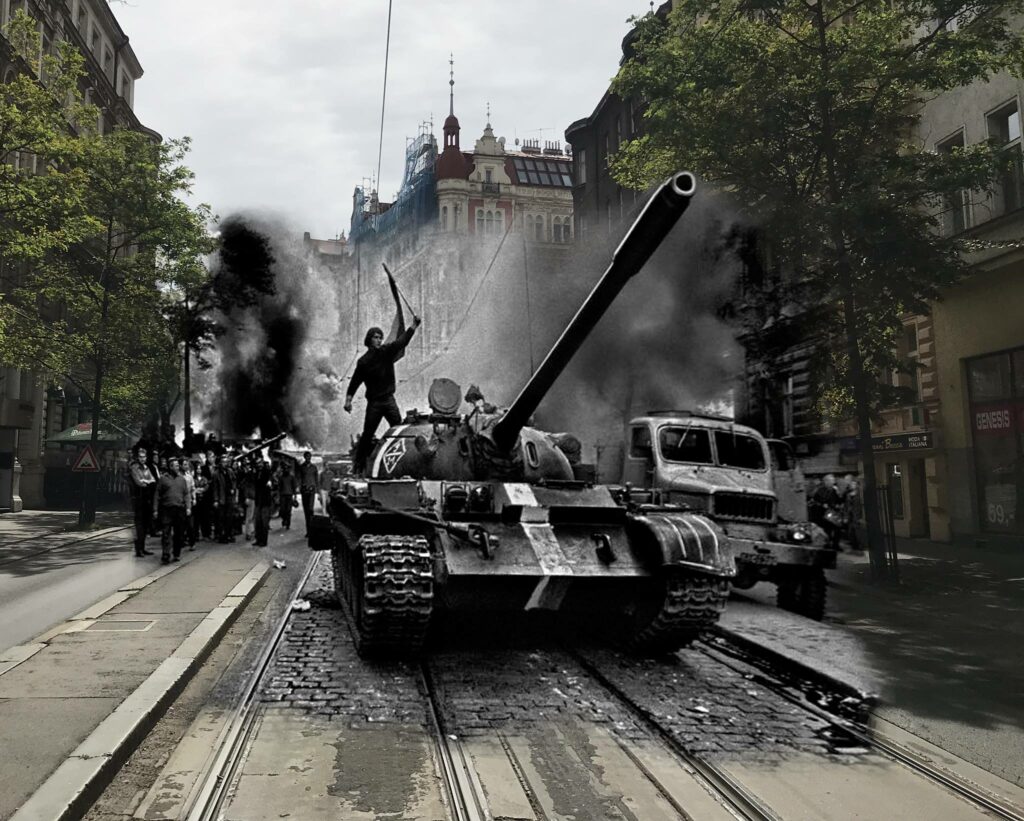
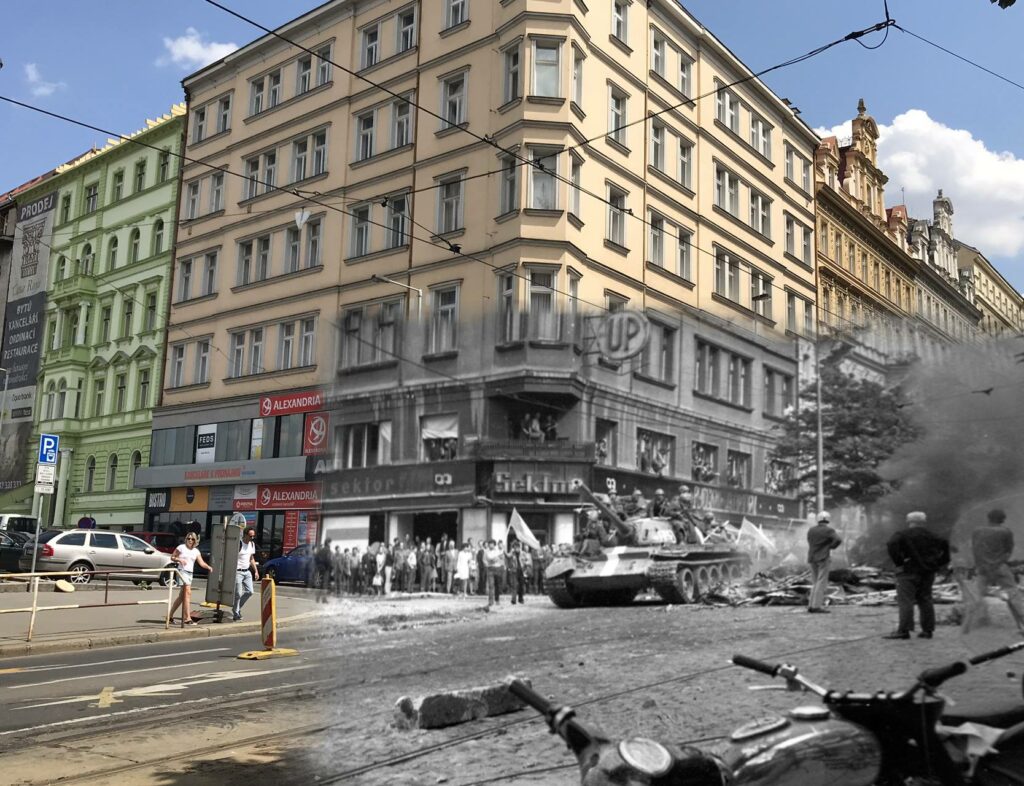
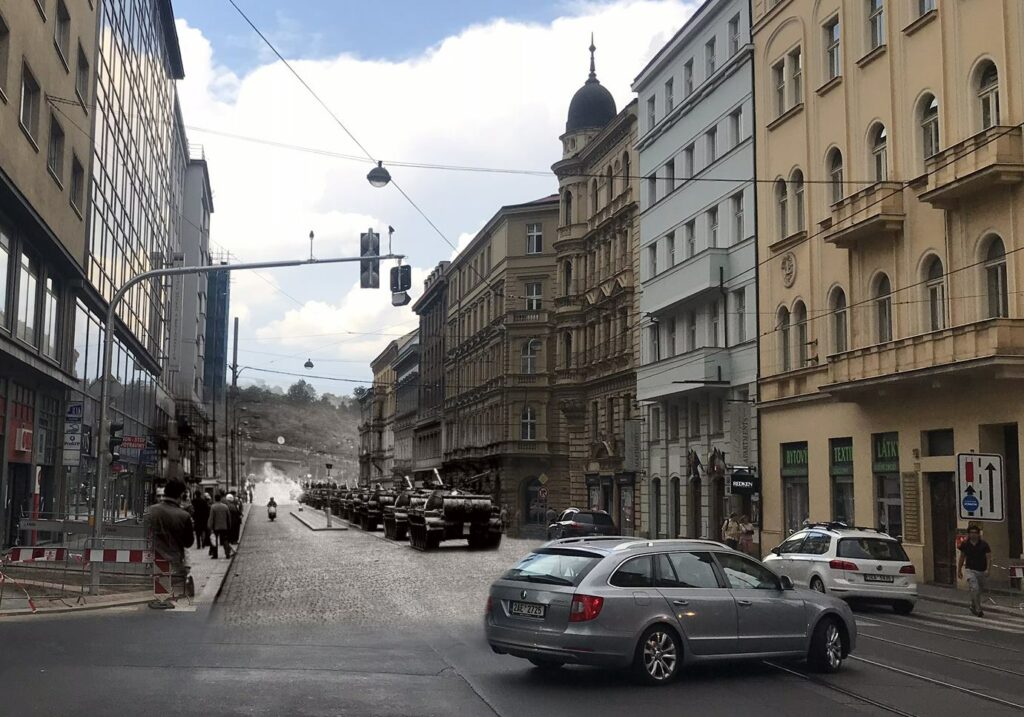

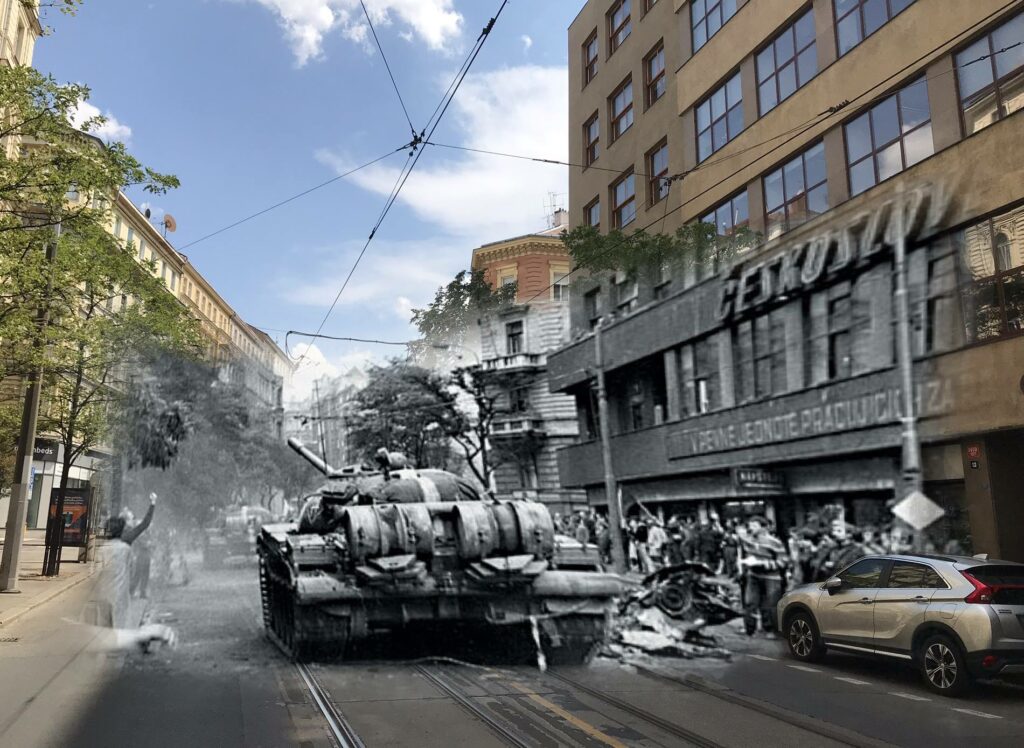 \
\
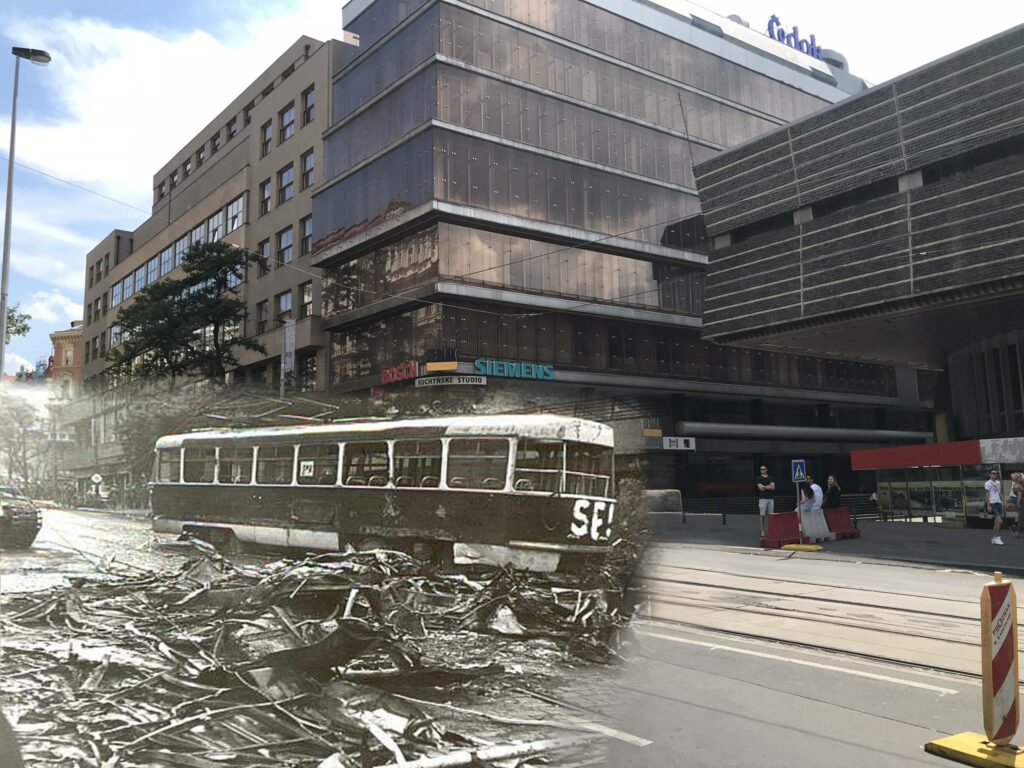
Would you like us to write about your business? Find out more
The journey of “The Fellowship of the Ring” is over, the decisive battle for Middle Earth begins!
Enjoy the dramatic conclusion to the trilogy in a unique cinematic performance with live music by Oscar-winning composer Howard Shore, performed by a 230-piece symphony orchestra, choirs, and international soloists.
The concert with a spectacular film screening will take place twice, on the 8th and 9th of November, 2024, in the modern concert hall O2 Universum Prague.
The Lord of the Rings: The Return of the King, based on the book by J. R. R. Tolkien, premiered in the Czech Republic on 15 January 2004. Its attendance reached three-quarters of a million spectators. Although more than 20 years have passed since its release, this groundbreaking work has lost none of its popularity.
On the contrary, more and more new generations admire its excellence. Howard Shore, who won two Oscars for The Fellowship of the Ring and The Return of the King, composed the beautiful music for the trilogy. The third Oscar was awarded to the final song of the saga, Into the West, sung by the famous Annie Lennox.
“The large scale of the music requires a symphony orchestra, a mixed choir, a boys’ choir and instrumental and vocal soloists singing in Tolkien’s literary languages, but of course also in English”, explains the author.
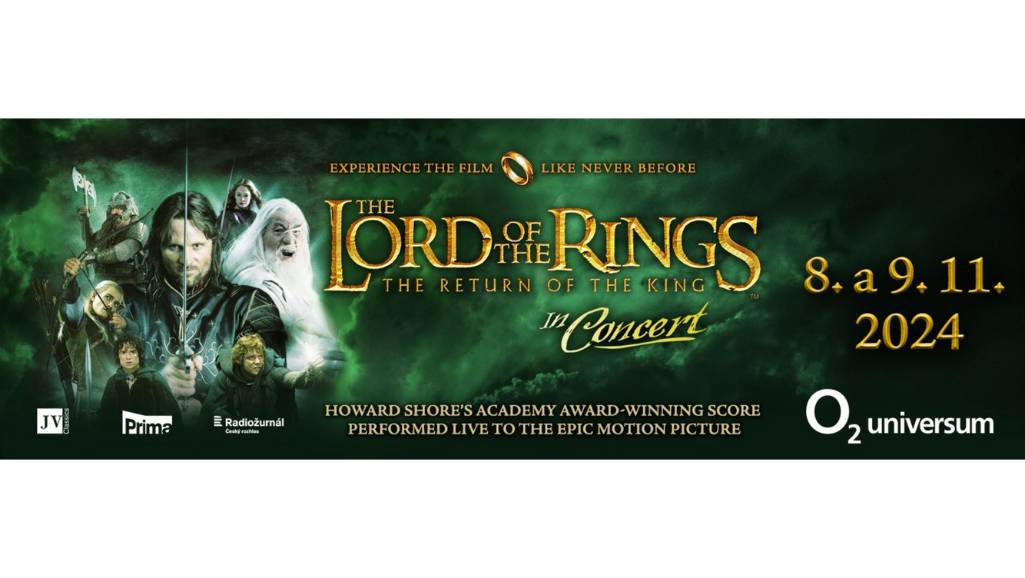
His compositional skills are on full display here, creating a perfect second plan for the story. Styles and instruments from different parts of the world illustrate and characterize the various elements of Tolkien’s saga.
The Return of the King won eleven Oscars, making it one of the Hall of Fame films with the most golden statuettes.
Director Peter Jackson’s completion of the epic trilogy has forever placed him on the throne of fantasy filmmakers, and his name is etched in the minds of millions of people around the world. Tolkien himself referred to his Middle Earth books as a work he thought could not be translated to the screen.
The production team led by Peter Jackson, with all their love and respect for the work, have proved otherwise, and thanks to them we now have the opportunity to see the entire Lord of the Rings trilogy in HD.
“The Lord of the Rings has been my heart’s desire since I was a child, and the opportunity to bring this world to the screen was a dream come true,”Jackson said in an interview after the premiere of The Return of the King.
Tickets for Lord of the Rings: Return of the King are available at Ticketmaster and Ticketportal.
More info here or on the official website
Would you like us to write about your business? Find out more
The Signal Festival is set to return to Prague this October, offering a captivating blend of digital art and creative culture.
This year, two of the city’s historic landmarks—the Archbishop’s Palace on Hradčanské Square and the City Library on Mariánské Square—will be transformed by mesmerizing video mappings.
Internationally acclaimed digital artist Filip Hodas will breathe new life into the Archbishop’s Palace with his installation, Eternal Recurrence. Hodas, known for blurring the line between fiction and reality, will use video mapping to highlight the palace’s architectural details, weaving a digital narrative that spans the history and evolution of life forms.
The palace, a late Baroque gem with a Rococo facade, has stood in Hradčany since the 16th century, and this new artwork will add a fresh dimension to its storied past.
Meanwhile, the City Library on Mariánské Square will be the canvas for The Rhythm of the Ocean, a video mapping installation by the Spanish-Danish visual group Desilence.
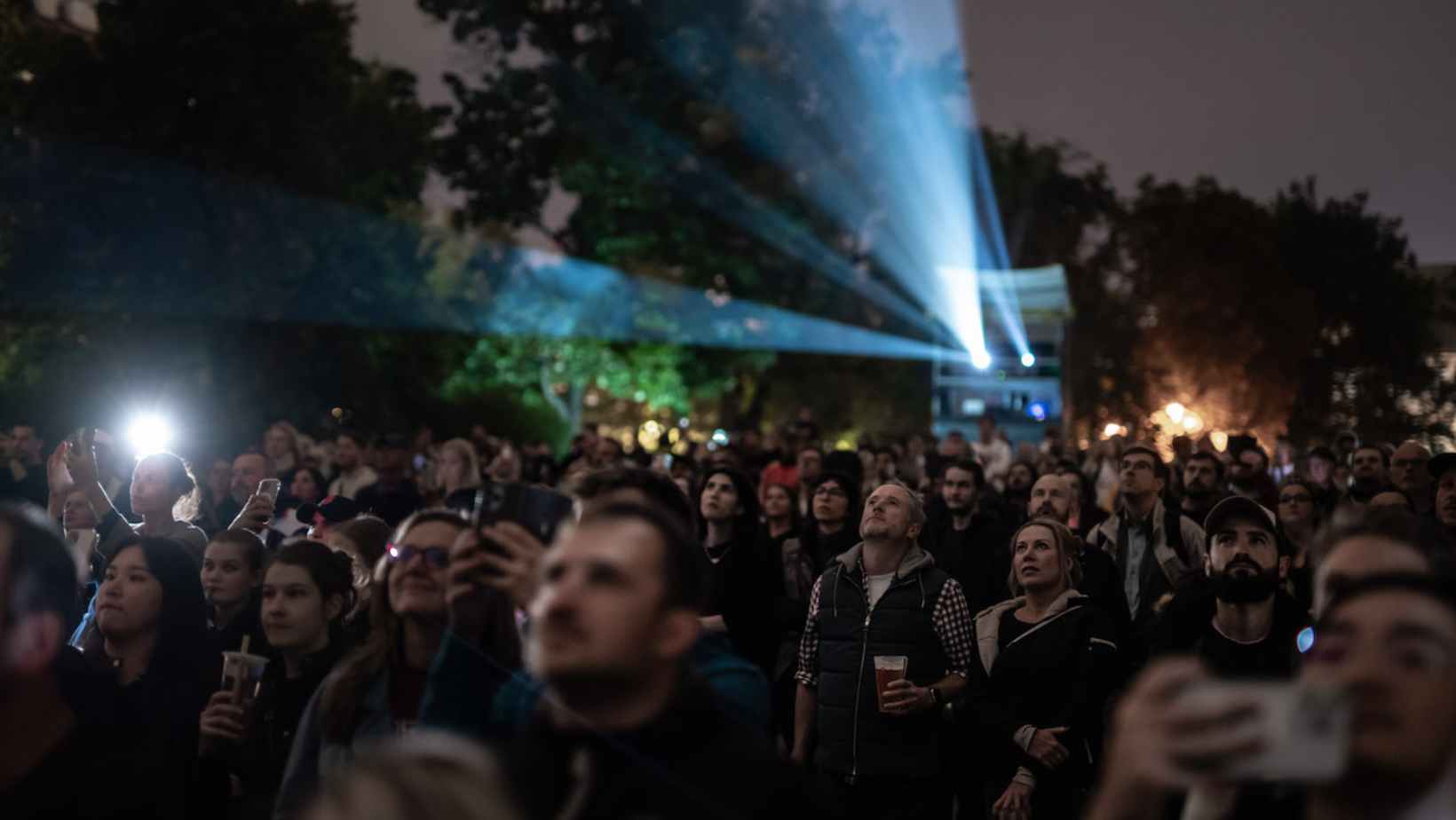
The creative duo behind Desilence, Tatiana Halbach and Søren Christensen, will transform the library’s neoclassical facade into a dynamic and powerful visual experience. Accompanied by the evocative soundscapes of Suzanne Ciani, a pioneer in electronic and synthetic music, the installation will plunge viewers into the depths of the ocean, exploring its rhythmic and climatic balance. Ciani, who has been nominated for five Grammy Awards and is the first woman to receive the Moog Innovation Award, brings her unique sonic expertise to this ambitious project.
The 12th edition of the Signal Festival, themed Ecosystems 02: Quest, will run from October 10 to 13. It will feature a wide range of works by Czech and international artists, inviting attendees to explore themes of balance and space in an age of digital and biological innovation.
For the first time, the festival will also host the Signal Forum, an educational and networking conference aimed at those interested in the latest trends in art, science, and technology.
The conference will take place on October 11 and 12 at the Center for Architecture and Metropolitan Planning (CAMP) in Prague, offering lectures, workshops, and activities designed to foster collaboration between professionals across various fields.
Tickets for the Signal Festival, including access to the new gallery zone, can be purchased in advance at a discounted rate through the festival’s website.
Would you like us to write about your business? Find out more
For over 20 years, the South Bohemian village of Holašovice has held a place on the UNESCO World Heritage list.
Located approximately 16 kilometers west of České Budějovice, this village is famed for its picturesque houses, built in the distinctive Peasant Baroque style.
However, Holašovice offers much more than just architectural charm. According to Novinky.cz, it is considered the most beautiful village in the Czech Republic.
The first recorded mention of Holašovice dates back to the late 13th century. The village has a rich and storied history, marked by events such as the Hussite wars and a devastating plague in the 16th century that significantly reduced the local population.

The iconic houses that now define Holašovice were constructed in the latter half of the 19th century, reflecting the Baroque, Rococo, and Classical influences prevalent in South Bohemian architecture of that era.
The village’s ethnic composition underwent significant changes during and after World War II. Following the establishment of the Protectorate of Bohemia and Moravia, the Czech residents were forced to leave Holašovice, and the village was annexed to the Third Reich.
After the war, the German population was expelled, once again altering the village’s demographics.

Lada’s Pond and the Czech Stonehenge
Despite its turbulent past, Holašovice has retained a unique atmosphere that continues to attract visitors.
In addition to its charming houses, tourists can explore the local chapel and the picturesque Lada’s Pond, which, along with a statue of a water sprite, seems to be straight out of a painting by Josef Lada.

Just outside the village lies a unique stone circle, often referred to as the “Czech Stonehenge.” This site was designed to channel negative energy away from the human body, offering visitors a chance to experience its reputed healing properties.
Last year, a massive 90-tonne menhir was added to the site, making it the largest of its kind in Central Europe.
Would you like us to write about your business? Find out more
Czech President Petr Pavel believes that Ukraine’s NATO accession should not depend on regaining full control over all its territory.
“If there is a demarcation, even of some administrative border, then we will be able to recognize this administrative border as a temporary state border and allow Ukraine to join NATO with the territory it will control at that moment,” he explained.
Pavel mentioned an example of Germany which joined the Alliance in 1955, even though a part of its territory was occupied by the Soviet Union until 1990.
“So I think that there is both a technical and a legal decision which will allow Ukraine to join NATO without dragging it into the conflict with the Russian Federation,” Pavel said, adding that it would only be possible after the start of negotiations between Kyiv and Moscow.
He stressed that democratic countries should treat Russia-occupied territories of Ukraine only as temporarily occupied.
The July NATO summit in Washington ended with the launch of the Ukraine Compact, a security framework signed by 32 allies. The countries affirmed Kyiv’s “irreversible” path toward membership, though Ukraine did not receive any definitive news about its future accession.
President Volodymyr Zelensky, who has repeatedly called on partners to issue a membership invitation to Kyiv, said that Ukraine will join NATO only after Russia’s full-scale war ends.
Pavel expects that Ukraine and Russia could conclude an agreement “in the coming years,” which potentially could mean that some of Ukraine’s territories may be under Russia’s occupation, but the West should consider these territories only as “temporary occupied,” the media outlet reported.
In March, the Czech president said that Russia “has no right” to set conditions for peace in Ukraine. According to Pavel, instead of negotiations, the war would likely end with one side’s clear military victory or both sides’ eventual exhaustion.
Would you like us to write about your business? Find out more
If maintaining healthy, radiant skin has been an uphill battle for you – then you might be interested in a cozy skin clinic just a few streets away from Jiřího z Poděbrad, tucked away just off of Riegrovy Sady.
Established in 2022, Face Place is a subsidiary of the wildly popular Hollywood facial clinic which bears the same name.
Face Place was opened by Ladana Edwards, who’s been a Prague resident for over 20 years. Dealing with acne, both her own and her son’s, led her down a unique journey, specialising in skin health.
“My son battled acne from an early age, just like I did. We’d take him for a facial here in town and it didn’t help at all. They’d torture him with painful extractions resulting in infections and scarring and his acne would be even worse.”
Ladana got the idea to dip into her own past for a solution,
“When I had my own troubles with acne, as a young woman, the one treatment that really worked was a galvanic facial offered in my home town. It worked so well, in fact, that I’ve continued to use it for another 30 years, long after my acne had cleared up.”
This galvanic facial technique, now called the iDerm Facial, was originally introduced in the 1930s by a company called Dermaculture (now a constituent of Face Place). It uses a galvanic current to stimulate collagen, rehydrate the skin, and, most importantly, deliver healing vitamin C particles deep into the dermis.

“We decided to bring our son back to the US for an iDerm facial, and sure enough, it worked. His face began to improve after the first visit.”
This was a turning point for Ladana and the inception of Face Place. She got the idea to bring the treatment to Prague, with no intent to start a business. Rather, she wanted for her son to have an effective (and accessible) treatment in the Czech Republic. “I inquired to Face Place about buying one of their iDerm machines for personal use, and that’s when they proposed that we open a Face Place here in Prague”
As it turned out, Paul Rogers and Tony Silla, owners of Face Place in the US, had already been eyeing Prague as a potential expansion location. According to Paul,
“A lot of our clients are in the movie industry, and they travel abroad for various productions – very often to Prague.” When they come back, they’re always asking if we could open something up over there so they could continue getting the treatments.”
Ladana and her husband, Douglas, agreed that it seemed like a promising venture. Ladana was just finishing a job at Deloitte, as she was preparing the next phase of her career, getting her PhD and starting a leadership development practice. The skin clinic seemed like an interesting fit with the new direction in her career.

“As a coach, I see firsthand how people’s appearance and perception of themselves affects their engagement with others, so it’s nice to see the positive improvement on the outside translating to a better attitude and confidence from the inside.”
Face Place is not your typical luxury spa, with a never-ending list of treatments with exotic names and ingredients. They focus on what is most effective. The staff are skin coaches, offering ongoing treatment and after-care advice for clients, all the while using the highest grade and dermatologically-approved products. While the atmosphere in the little clinic is welcoming and friendly, it definitely sits somewhere between purely sensorial and purely clinical.
“When we first opened,” Ladana laughs, “we had women visiting us and complaining that they didn’t like the treatments because they were used to a more high-end, luxury experience. But sure enough, after a comment from their friends or husbands about how good their skin looked, they’d all sneak back in the following week.”
View this post on Instagram
And slowly but surely, the word is getting out. Ladana says the business has been steadily growing since their opening in 2022.
“At first, we had a lot of actors from international films shooting in Prague. Nowadays, we’re getting a lot more teens with acne issues.”
Face Place attracts both a younger, as well as older clientele, both of whom are looking for an alternative to botox or various invasive cosmetic procedures.
“It’s not that we’re against botox, or any other procedure you might want. In fact, many of our customers come here after those procedures to ease the healing process.” Ladana explains,
“But our philosophy is really about maintaining skin health and nourishment, so hopefully you won’t need those more drastic procedures unless they’re really necessary. Lots of people visit the gym regularly so they look great and don’t have health complications as they get older. We like to think of ourselves as the gym for your face.”
Would you like us to write about your business? Find out more
Soviet tanks led the way as more than 200,000 Warsaw Pact troops marched into the Czechoslovak capital during the night of August 20, 1968, ending the Prague Spring at the behest of the rulers in Moscow.
The number of occupying troops would total more than 500,000, and the invasion would put an end to the dream of a European socialism based on freedom — above all freedom of expression.
When he took office as the first secretary of the Communist Party of Czechoslovakia at the beginning of 1968, Alexander Dubcek began allowing journalists to ignore the official censorship orders.
He supported free and democratic socialism in the hope that Soviet leaders in Moscow would allow the Czechoslovak Socialist Republic (CSSR) to forge its own way in the Kremlin-dominated Eastern bloc. But, ultimately, there was a greater fear that more freedom in the CSSR could lead to upheaval in neighboring Soviet-aligned countries.
“Operation Danube” was the largest military mobilisation in Europe since the end of World War II.
Soviet leader Leonid Brezhnev’s official reason for the 1968 invasion was to protect Czechoslovakia from corrupt Western influences attempting to interfere with socialism by “creating a counterrevolution.”
The Soviets claimed that Czechoslovak politicians had asked for their help and protection, a claim that remains controversial.
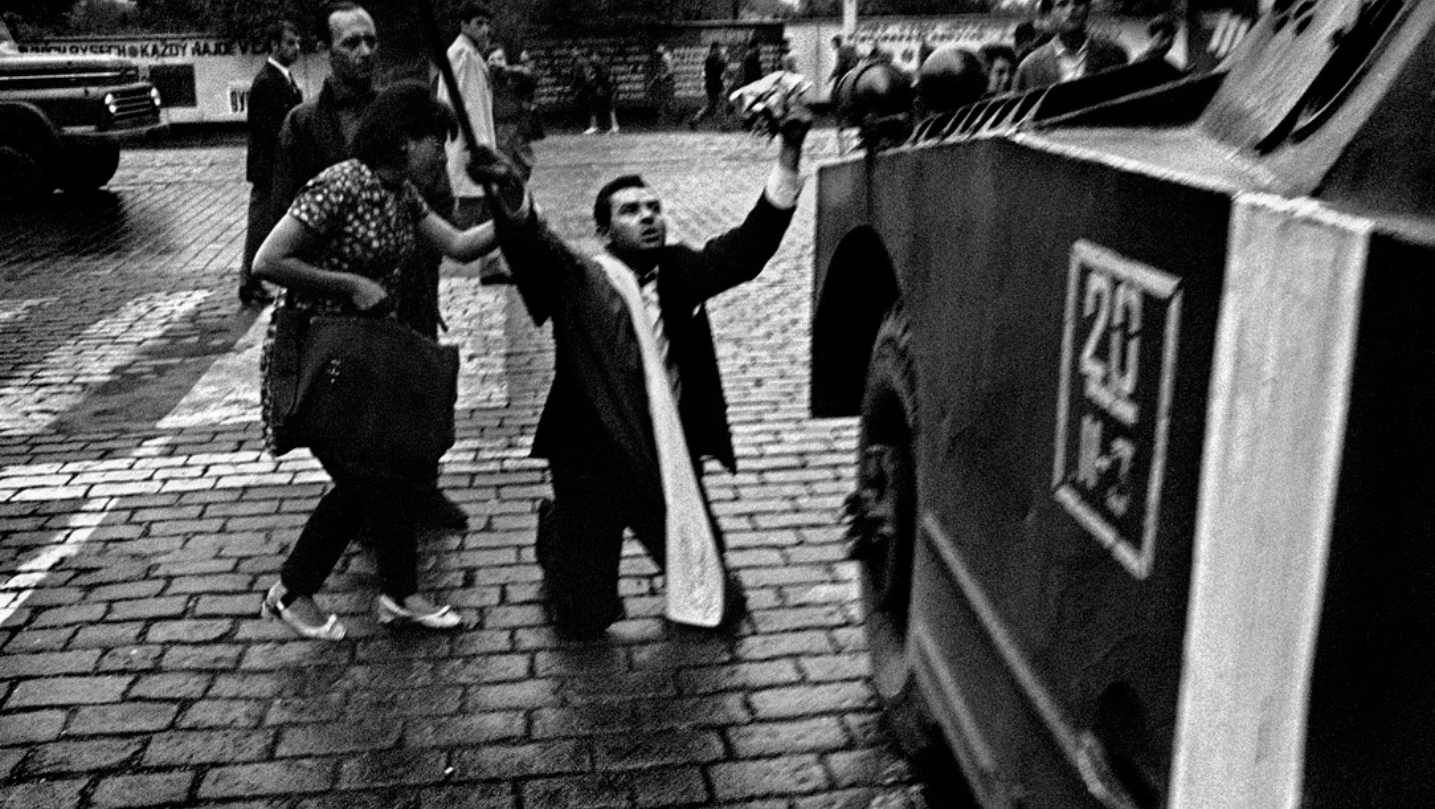
Josef Koudelka | Invasion 68: Prague Invasion by Warsaw Pact troops. Prague, Czechoslovakia. August, 1968. © Josef Koudelka | Magnum Photos

Josef Koudelka | Invasion 68: Prague Invasion by Warsaw Pact troops. Prague, Czechoslovakia. August, 1968. © Josef Koudelka | Magnum Photos
Rebellion
At around 1am local time on August 21, the presidium of the Central Committee of the Communist Party of Czechoslovakia issued a statement calling on “all citizens of the Republic to keep the peace and not resist the advancing armies, because the defence of our state borders is now impossible”.
The army was told to remain in barracks and not intervene.
But ordinary Czechoslovak citizens poured into the streets in acts of resistance, confronting the soldiers directly and surrounding tanks in Prague and other cities. Students and others gathered on the capital’s main Wenceslas Square, stringing up banners calling for “Svoboda” (Freedom) and expressing support for Dubcek and his government. Crowds chanted, “Dub-cek! Svo-bo-da!”
Many residents began gathering in front of the Radio Prague building, where clashes left more than a dozen dead. By 8am the building had been occupied by Soviet soldiers.
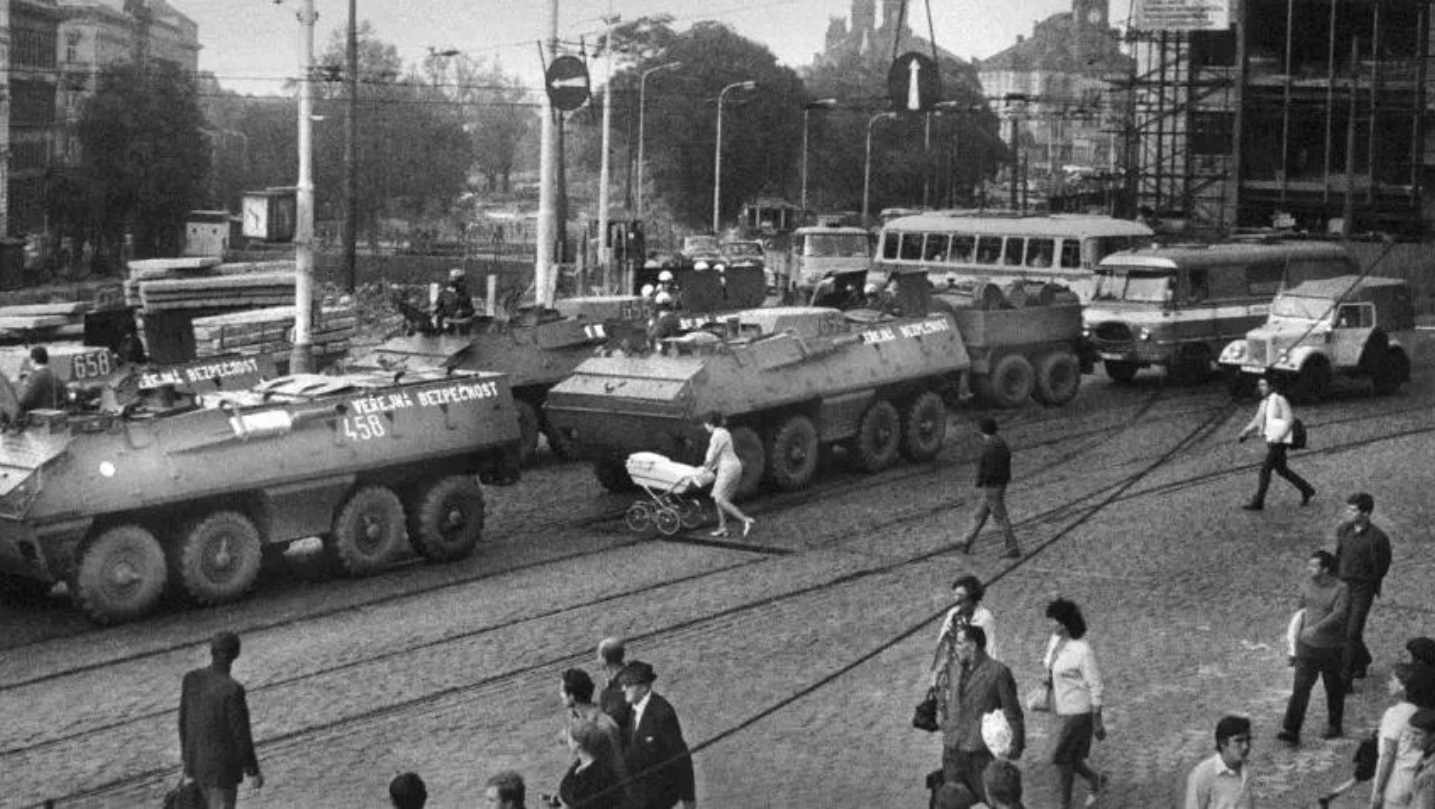
Accounts of how many people were killed in the Warsaw Pact invasion vary widely. A previously secret Czech interior ministry report published in 1990 revealed that 82 people were killed and 300 seriously wounded in the invasion, most of them shot. Last year a team of Czech historians estimated the number of victims at 137.
The Czech leadership’s leading reformers – Dubcek and premier Oldrich Cernik along with Jozef Smrkovsky and Frantisek Kriegel – were quickly arrested and taken to Moscow. They were soon joined by president Ludvik Svoboda, deputy chairman of the government Gustav Husak and others.
After days of secret negotiations the Czech officials returned to Prague, having agreed to Soviet troops being stationed along the Czechoslovak border and reinstating censorship of the press under an agreement known as the Moscow Protocol.
Upon his return, Dubcek gave an emotional radio address in which he announced the curtailment of reforms and urged cooperation. Thus began Czechoslovakia’s period of “normalisation”, which reasserted Kremlin control and returned the country to ideological compliance.
Would you like us to write about your business? Find out more
An emergency button installed at every Prague metro station can stop an oncoming train immediately if someone falls onto the tracks.
However, many passengers are unaware of its existence, leading to tragic incidents.
Last week, a blind man tragically lost his life at Křižíkova station when he fell onto the tracks and the train could not be stopped in time.
The police are now urging the public to familiarize themselves with these emergency buttons, which are a crucial safety feature.
Eva Kropáčová, a spokesperson for the police, emphasized the importance of knowing about them: “Right now, our goal is to raise awareness about the emergency button so that in case of an accident, people can act quickly and prevent a tragedy.”
The emergency buttons are located on the platform near the tracks and are usually positioned at both ends of the platform, either mounted on walls or poles.
They are protected by glass that needs to be broken to activate the system. When pressed, the button sends a signal to the train’s safety system, either stopping the train or preventing it from starting.
In the recent Křižíkova incident, bystanders noticed the man falling but did not realize there was a faster way to stop the train than calling the emergency hotline.
“Unfortunately, none of the witnesses seemed to know about the emergency button, which could have stopped the train immediately,” Kropáčová said.
A similar situation occurred this Thursday at Jiřího z Poděbrad station when a foreign passenger fell onto the tracks. Fortunately, he managed to climb back up onto the platform with the help of other passengers.
He was later found to be under the influence of alcohol, with a blood alcohol level of four milliliters. This wasn’t an isolated case – two years ago, a similar incident happened involving another intoxicated individual.
In both cases, no one pressed the emergency button, which should be the first step when someone falls onto the tracks, according to Kropáčová.
The annual Night of Castles and Chateaux takes place on August 24.
Most Czech castles and châteaux turn into magical places full of stories and experiences. These aristocratic residences will teem with life during non-traditional times (even at midnight) and the non-traditional program will make sure visitors want to go back.
The program includes night tours, tours with lanterns and candles, theatrical performances, concerts, shows and other amusements.
You can try contemporary fare in the castle kitchens, have a look in places where visitors usually never get to see, or you can walk around the château with a flashlight and hear stories that sent chills down the spine during previous generations.
The Gardens below Prague Castle will be lit up with torches, so you can experience its unique, romantic atmosphere. You can also look forward to a historical fencing show with expert commentary; and to guided tours of these beautiful Baroque gardens.
Castle across all Czech regions, and attractions in Prague Various castles such as Litice Castle (in Pardubice) and Trosky Castle (Liberec) will also take part in Castle Night.
Visitors to Trosky Castle can enjoy the melodies of the country band Nabitý baterky, while immersing themselves in local castle legends.
Karlštejn Castle ceremonially reopens after three-year reconstruction
Visitors to Hluboká Castle near České Budějovice can explore the history of ice cream and sorbet production, learning about their preparation and presentation according to historical recipes.
The Night of Castles and Chateaux is an annual celebration organized by the National Heritage Institute starting in 2010.
Its goal is to present our heritage sites in a new light, at an unusual time of day and with special events.
Would you like us to write about your business? Find out more
The Czech Health Ministry is drafting an amendment to a decree that could significantly impact the e-cigarette industry.
The proposed changes would prohibit all flavours except tobacco, as well as sweeteners and other additives commonly used in e-cigarette liquids.
These regulations would apply solely to vaping products, leaving traditional cigarettes and other nicotine alternatives unaffected.
Industry representatives have responded with alarm, warning that this move could lead to the collapse of the entire sector.
“We are stunned. Without any prior consultation, the ministry is essentially planning to ban e-cigarettes in the Czech Republic,” said Robert Hrdlička, chairman of the Chamber of Electronic Vaping (KEVAP).
He argued that without the now-banned ingredients, tobacco-flavoured e-liquids would be unsellable. “The ministry is imposing an amateurish and uninformed view on what tobacco should taste like,” Hrdlička added.
In addition, a new excise tax on e-cigarettes is set to take effect in September, with further increases planned in the coming years. “The government’s approach is entirely illogical. First, they encourage e-cigarettes as a tool to reduce smoking, and now they’re essentially banning them,” Hrdlička criticized.
Experts in the e-cigarette field warn that such a ban could push users back to conventional cigarettes or encourage smuggling of e-liquids from abroad.
Currently, around 11% of the Czech population, approximately one million people, use e-cigarettes.
“E-cigarettes are among the least risky alternatives to smoking, as confirmed by numerous studies and experts. It is completely irrational for the state to target one category while ignoring the rest,” added Hrdlička.
Instead of outright prohibition, KEVAP suggests that the government focus on restricting access to e-cigarettes for minors, perhaps through licensed sales channels that would allow for better market oversight.

